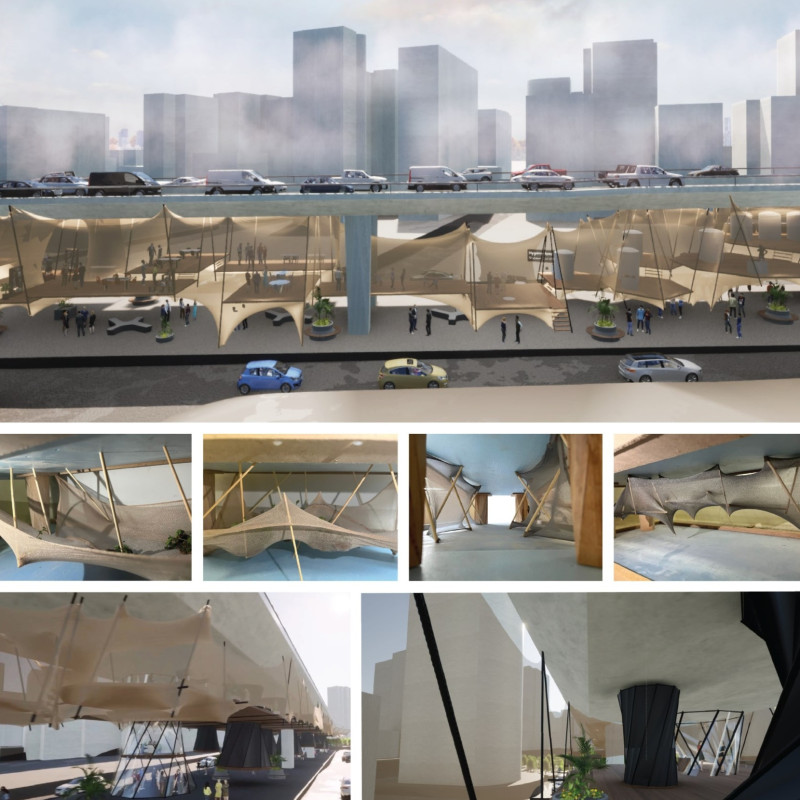5 key facts about this project
### Project Overview
Located beneath the Cola Bridge in Beirut, Lebanon, this design project aims to enhance public space by bridging architectural and urban functionality. Strategically positioned near major transportation hubs, the site is surrounded by a diverse urban fabric comprised of residential, commercial, and institutional buildings, which facilitates interactions within the space. The intent is to transform an underutilized area into a dynamic environment that supports various community activities.
### Spatial Configuration
The design leverages an adaptable framework that accommodates a range of functions for diverse user groups, including university students, local workers, and transient visitors. The spatial layout features both open and enclosed areas designated for activities such as a bus station, gallery, and informal gathering spaces. This configuration promotes fluid movement and accessibility, fostering engagement among users.
### Material Selection
Key materials include tensile fabric, which provides flexibility and lightweight qualities, complemented by a robust steel framework that ensures structural integrity. Concrete serves as the foundational element, while glass is incorporated for its ability to enhance natural light and create visual transparency. The combination of these materials contributes to a functional and sustainable design, reflecting a commitment to environmental responsiveness.
### Community Integration
A standout feature is the emphasis on community-oriented spaces that adapt to seasonal variations. Designed to encourage social interaction, the project incorporates areas for gatherings and religious practices, such as a small mosque, highlighting the cultural context of the location. This approach not only addresses immediate community needs but also promotes inclusivity and social cohesion.
Overall, the project represents a significant advancement in urban connectivity and sustainable practices, aiming to empower the local community while reimagining the potential of public infrastructure.





















































